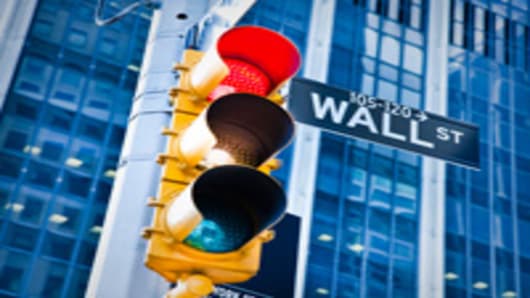While the final data has not yet been released—and probably won’t be until November—the preliminary data on the business school’s website indicates that financial services as a whole took 35 percent of the class of 2012, with 31 percent of those in market-sensitive jobs in hedge funds, investment banking, investment management, private equity and venture capital. Last year, 39 percent went into financial services overall and 35 percent into Wall Street jobs.
(Read more: Hedge Fund Returns Worsen: 'Enormous Unraveling'?)
Every category of Soifer’s market-sensitive jobs declined apart from private equity, which rose to 15 percent from 14 percent. Investment banking shrank to 7 percent from 10 percent. Venture capital shrank from 1 percent to below a full percentage. Hedge funds and investment management used to be counted together by HBS. This year they combined for 9 percent (5 percent hedge funds, 4 percent investment management), compared to last year’s 12 percent.
(Read more: America’s Highest Paying Jobs)
With the exception of private equity, the HBS jobs pattern looks a lot like 2009, when Wall Street was still reeling from the financial crisis. That year just 6 percent of HBS grads went to investment banking and 8 percent to hedge funds and investment management.
Indeed, except for 2009, the numbers for these categories have not been this low since 2002-2005, when Wall Street was suffering the after-effects of the dot-com bubble.
Private equity garnered its largest share of HBS graduates, with the exception of 2008. Very clearly, private equity is where its at these days.
(An aside: 2008 was the high-water mark for HBS students going to Wall Street. That may strike you as odd. Keep in mind that much of the recruiting and hiring for the class of 2008 was done many months before the financial crisis was fully apparent, some of it as early as the fall of 2007.)
Venture capital’s share of HBS grads continued its decline. It is now lower than any time in the past 10 years.
The industry sectors that gained the most HBS MBAs were health care, which rose to 7 percent from 4 percent, and consulting, up to 29 percent from 24 percent.
Soifer’s indicator signaled “Sell” for several years before the financial crisis and stock market collapse. It began indicating "Sell" in 2005. Soifer himself admits that the indicator produces many more "Sell" signals than "Buys."
It’s possible, I suspect, to improve on the indicator’s accuracy by including a directional aspect. In other words, instead of just using the flat percentage going to Wall Street, look at whether the share is rising. A rising share beyond the trigger would be a stronger sell than simple persistence above the trigger. (I’ve asked Harvard for the historical data, so perhaps we can try to improve this metric.)
One thing that is surprising: the average month's full-time work experience of Harvard MBA grads is declining. This belies the widespread impression that top business schools are requiring more real-world experience. In fact, the number of months worked peaked in 2008 at 54—or four and a half years. By the class of 2011, that had dropped down to 41 months or 3.4 years.
- by CNBC.com senior editor John Carney
___________________
Follow John on Twitter. (Market and financial news, adventures in New York City, plus whatever is on his mind.) You can email him at john.carney@nbcuni.com.
We also have two NetNet Twitter feeds. Follow CNBCnetnet for the best of the days posts, including breaking news. Follow NetNetDigest for a feed of every single post each day.
You can also be our friend on Facebook. Or subscribe to John's Facebook page.
We're on Google Plus too! Click here for John's Google+ page.
Questions? Comments? Tips? Email us atNetNet@cnbc.comor send a text message to: 917-740-8477.
Call us at 201-735-4638.



